This is one in a series of posts on the Nikon Z9. You should be able to find all the posts about that camera in the Category List on the right sidebar, below the Articles widget. There’s a drop-down menu there that you can use to get to all the posts in this series; just look for “Z9”.
One of the things that I do with a new camera to suss out how much spatial filtering exists is run a dark-field series at ISO 1000 at all timed shutter speeds. I did that today with the Z9, using single shot shutter mode, and 14-bit losslessly compressed raws. I’ll present the result as engineering dynamic range (EDR) for each of the four raw channels.
The red channel doesn’t have quite the dynamic range that the green channels do, and that’s because of Nikon’s white balance prescaling. This is a camera calibration technique that multiplies the red and blue channel counts by numbers that are burned into the camera at the factory. I think this is a brain-dead way to do this calibration; it would be more flexible to write the numbers into the metadata and do the multiplications in postproduction. But nobody asked me. At least the blue channel is not as affected as it usually is in Nikon cameras.
Here’s the same set of curves for the Z7:
The Z7 has about 2/3 of a stop more base-ISO EDR than the Z9, but is about the same at the upper end of the ISO range.
Here’s a direct comparison:
The Z9’s High Efficiency format does not affect EDR:
Neither does HEF*:
Here’s a plot of how the EDR varies with shutter speed with EFCS turned off.
You can see that something happens at around half a second that raises the EDR. Probably some kind of digital signal processing: I’ll be looking at that. As the shutter speeds get longer, the EDR drops because of dark current.
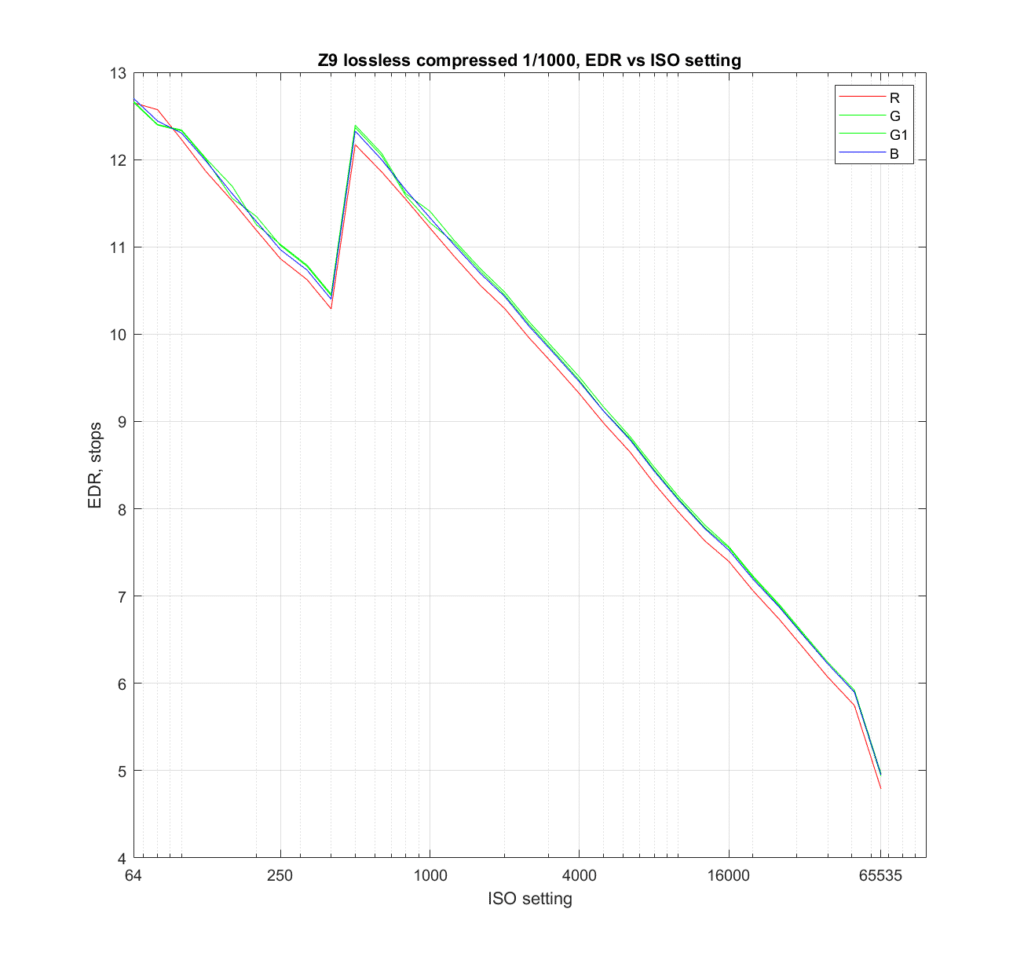
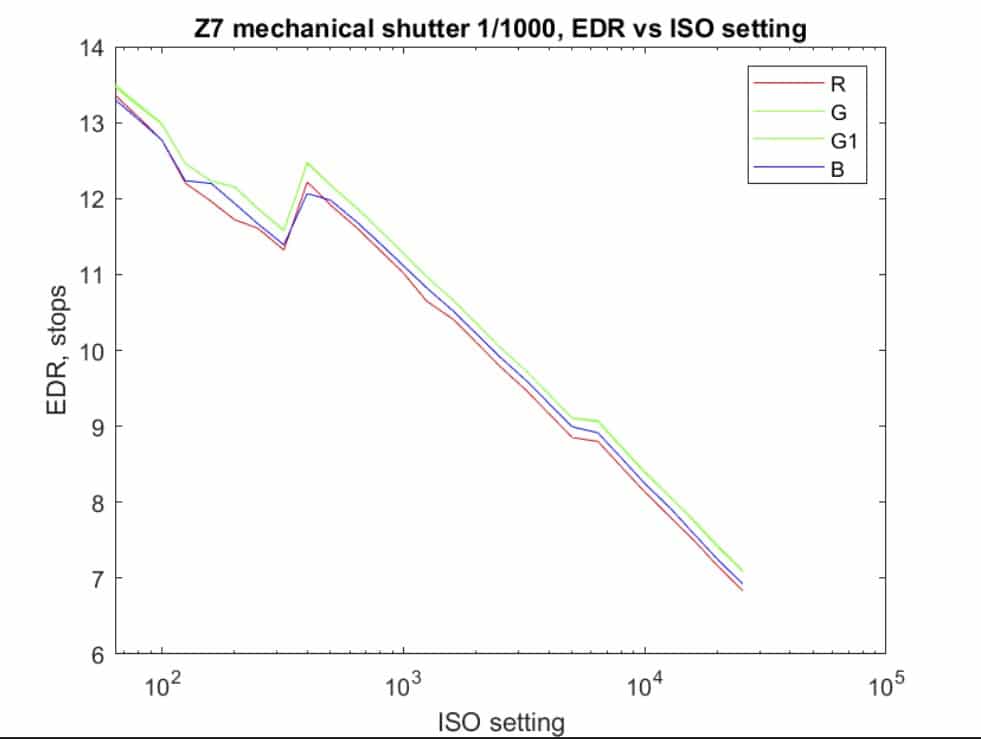
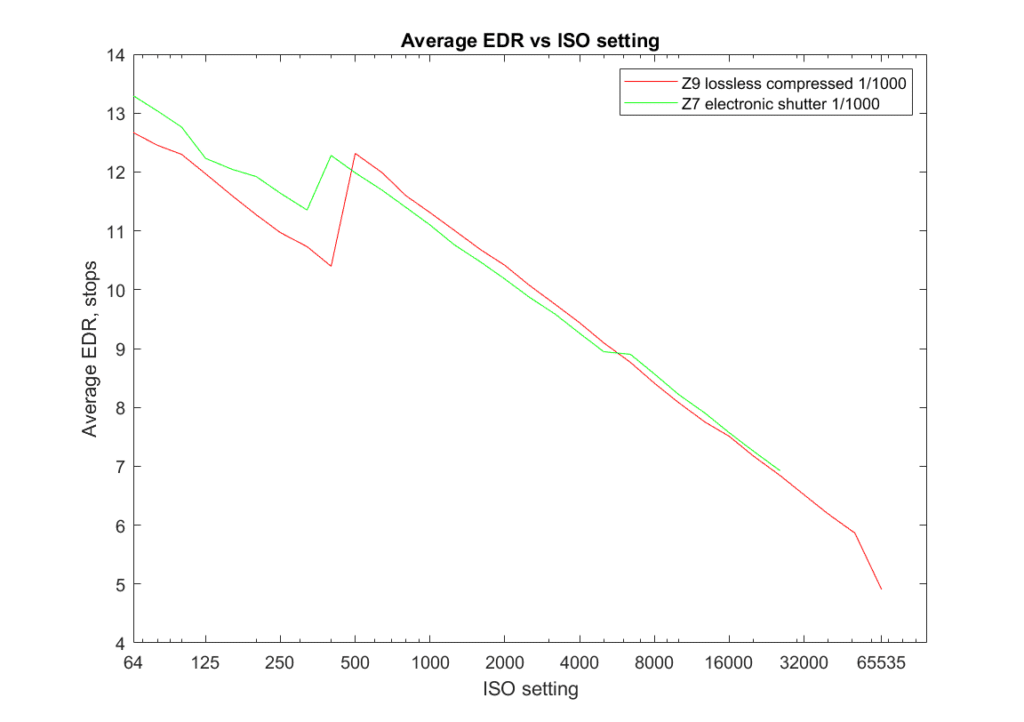
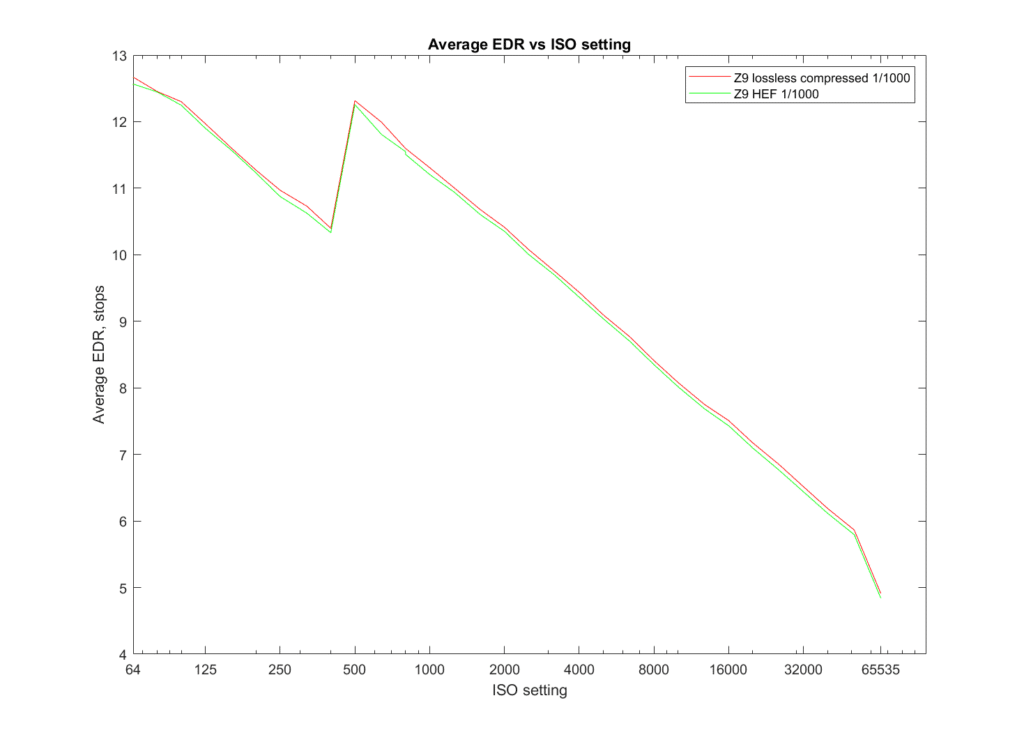
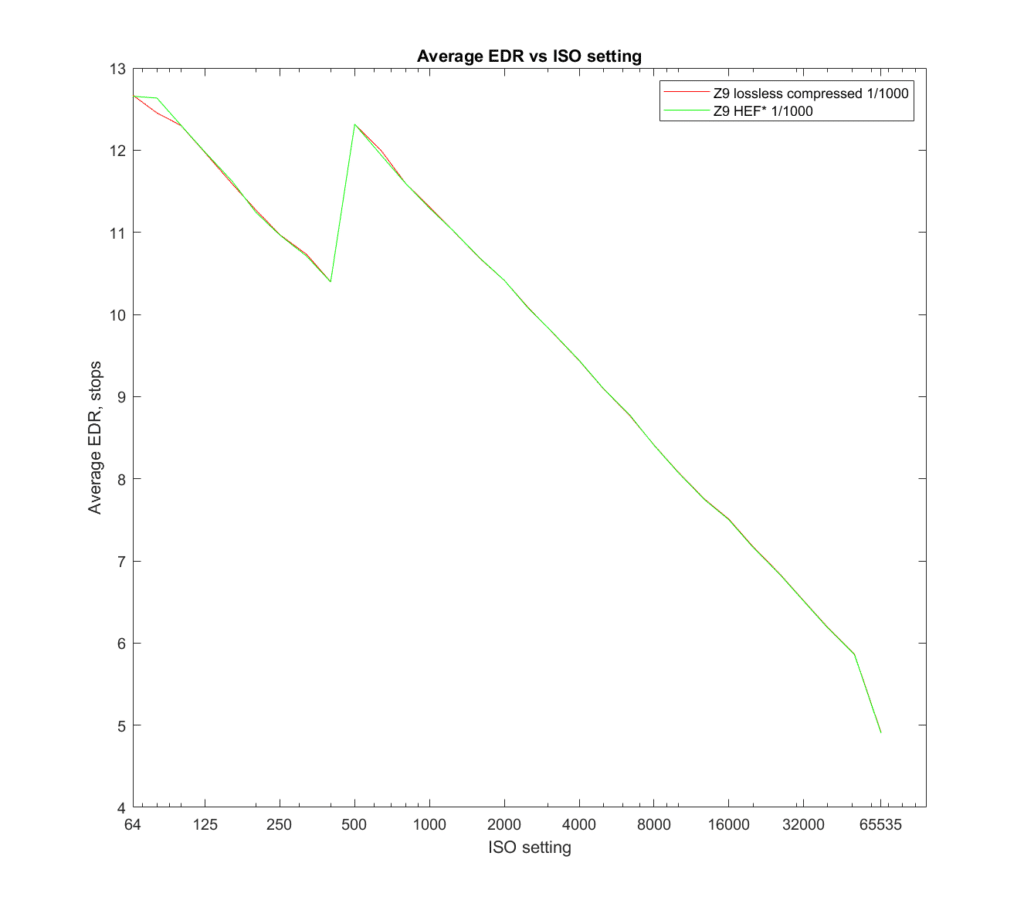
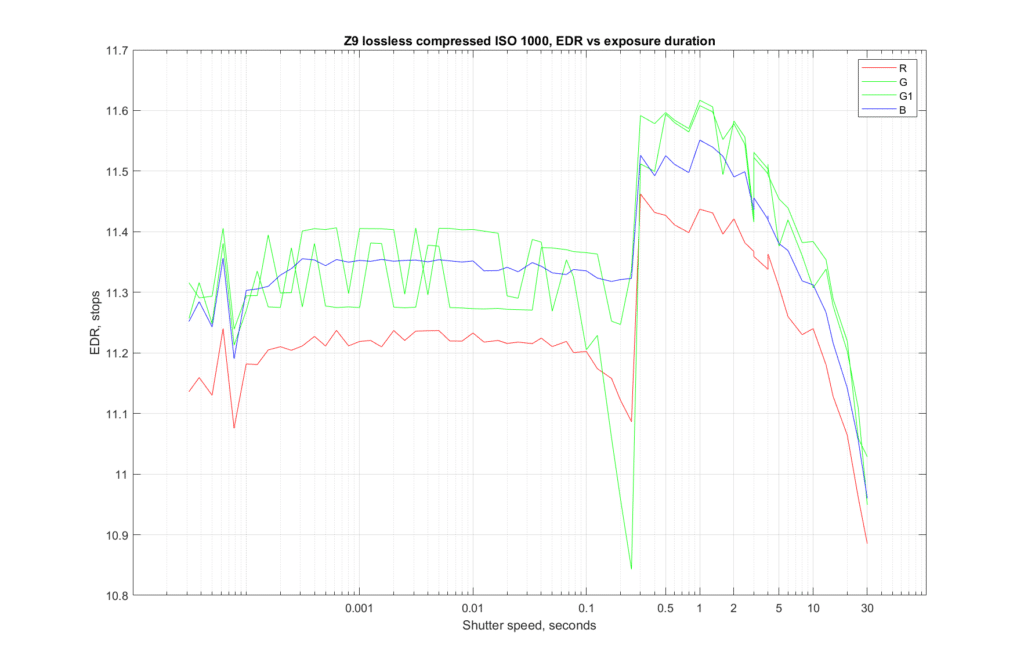
The Z7 EDR plot starts at a much lower value than the Z9’s ISO 100.
There is an omission in this post: the ISO 64 and 80 values for the Z9. I’ll fix that tomorrow.
Fixed now.
How does the EDR vs Exposure Duration compare to the Z7?
https://blog.kasson.com/nikon-z6-7/nikon-z7-lenr/
I’ve looked at all your results as well as those of Bill Claff’s—all very interesting. It looks from the curve that the EDR advantages of low ISOs (say, 64-125) vs. ISO 500 are even less in your results than Bill’s. Looking at all data can you summarize the meaningful advantages of shooting at ISO 64-125 vs. 500 for the Z9? Thanks!
I’ll be doing a visual demonstration of that very thig. Stay tuned.
Thanks very much for this info. I really hope you do this very soon, as I am heading to Ecuador in 3 weeks with two Z9s. Obviously in the cloud forest one does not often get the chance to shoot at ISOs in the 64-125 range, but sometimes with perched birds it is a possibility. I am trying to decide if it is even worth the bother as opposed to just staying at 500. So very much looking forward to your thoughts!